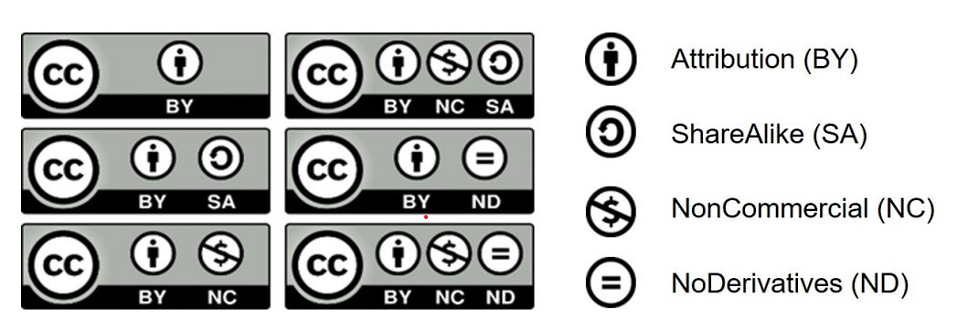What are Creative Commons (CC) licences?
Creative Commons licences act like a permission. When a creator applies one of the six licences on their work, they retain their copyright but allow the public to share, remix, adapt, and reuse the work legally without having to ask permission or pay additional fees, provided that the user complies with the conditions of the licence.
The six CC licences consist of three elements: the CC logo, icons representing a combination of conditions (which can also be represented by two letters – CC BY-SA - or written out in long form – Creative Commons Attribution-ShareAlike), and the version (4.0 International is the most recent).
The six Creative Commons licences are composed the CC logo and a combination of 4 conditions: Attribution (BY), ShareAlike (SA), NonCommercial (NC) and NoDerivatives (ND).
